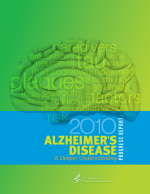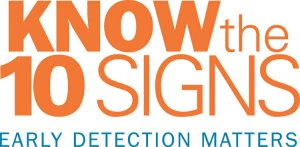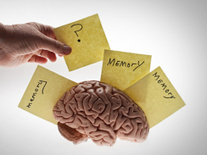By Melinda Smith
 When scientists look back to the first quarter of the 21st century, they may marvel at what was accomplished in the treatment and prevention of Alzheimer’s Disease. Alzheimer’s is the most common form of dementia and is reaching global proportions. The World Health Organization says more than 35 million people now live with dementia and that number is projected to double by the year 2030.
When scientists look back to the first quarter of the 21st century, they may marvel at what was accomplished in the treatment and prevention of Alzheimer’s Disease. Alzheimer’s is the most common form of dementia and is reaching global proportions. The World Health Organization says more than 35 million people now live with dementia and that number is projected to double by the year 2030.
As people live longer, there is growing pressure to develop a drug or vaccine that stops dementia.
Health and Human Services Secretary Kathleen Sebelius says setting priorities and coordinating research now will save time later.
“We’ve made the first historic investment of funds and a 15 year commitment to prevention and treatment,” she said.
In the past, the disease could be diagnosed only by doing an autopsy after the patient died.
Alzheimer’s researcher Ronald Petersen says new methods now can provide evidence while the patient is still alive.
“We use biomarkers, various imaging tests, blood tests, spinal fluid tests that are going to tell us that these are in fact indicators of what the disease is going to be,” he stated.
In images provided by the Banner Alzheimer’s Institute in Phoenix, Arizona, you can see the progression of the disease.
Inside the brain of an aging patient, the dark areas are formed by plaques – made up of the amyloid protein – and tangles – composed of another protein called tau. The result is a loss of brain cells and neurons responsible for memory and learning.
During a national summit last month on Alzheimer’s research, two promising clinical trials generated a lot of interest. In this trial, patients already showing signs of Alzheimer’s are given nasal syringes of insulin that push the drug into the neurons of the brain.
“Nearly three-quarters of participants showed improvement in memory over the four-month period, a 50 percent improvement,” said Dr. Suzanne Craft, who is in charge of the study..
But another study may promise earlier treatment to actually prevent the disease. Two years ago, New York Times reporter Pam Belluck and a photographer traveled to Colombia to visit an extended family afflicted by early onset Alzheimer’s. Approximately one-third carry a genetic mutation that brings on the disease while they in their ’30s and ’40s. Belluck says the healthier, older generation, often cares for younger victims.
“They may be bedridden. They need to be fed. They may need to be diapered. They’re also agitated,” Belluck spoke with VOA via Skype.
Early next year, a team of American scientists and Colombian doctors will begin a five-year clinical trial of more than 3,000 members of the family. Not all of the patients carry the genetic marker and some will get a placebo.
The head of the American team, Dr. Eric Reiman, says the immunization drug being tested is designed to clear the amyloid quickly from the brain.
“If we intervene sufficiently early before the disease has ravaged the brain, we think these treatments might have their best shot of having a profound effect,” he said.
Pam Belluck says the Colombian family members are anxious for something – or someone – to help them. Facing a grim future, many say they are willing to step forward if it will help them and future generations.






 Scientists say they “serendipitously” discovered that a drug used to treat a type of cancer quickly reversed Alzheimer’s disease in mice. “I want to say as loudly and clearly as possible that this was a study in mice, not in humans,” he said. “We’ve fixed Alzheimer’s in mice lots of times, so we need to move forward expeditiously but cautiously.”
Scientists say they “serendipitously” discovered that a drug used to treat a type of cancer quickly reversed Alzheimer’s disease in mice. “I want to say as loudly and clearly as possible that this was a study in mice, not in humans,” he said. “We’ve fixed Alzheimer’s in mice lots of times, so we need to move forward expeditiously but cautiously.”

 Alzheimer’s disease spreads through the brain by jumping from one cell to another, according to a new study.
Alzheimer’s disease spreads through the brain by jumping from one cell to another, according to a new study.